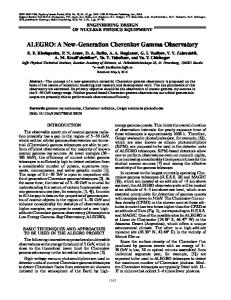Optical Telescopes at Devasthal Observatory, Nainital
- PDF / 3,288,041 Bytes
- 20 Pages / 595 x 842 pts (A4) Page_size
- 73 Downloads / 440 Views
Three modern optical telescopes of sizes 1.3-m, 3.6-m, and 4-m are installed at Devasthal, Nainital, located in the central Himalayan region of Kumaun, Uttarakhand. The 3.6-m Devasthal optical telescope is designed to be a technologically advanced and complex astronomy instrument. All three telescopes are used for night observations of celestial objects. The sky performance of the 3.6-m telescope is not only internationally competitive but also at par with the performance of other similar telescopes located elsewhere in the world. This article provides the global importance of the Devasthal observatory for optical and near-infrared observations in the present era of multi-wavelength astronomical studies.
Presently National Academy of Sciences India (NASI) Honorary Scientist working at Indian Institute of Astrophysics. Instrumental in formation of ARIES, an Autonomous Research Institute, under Department of Science & Technology,
1. Introduction
Government of India. Played key role in establishing world-class optical
An optical telescope is an instrument that collects and focuses light, mainly from the visible part of the electromagnetic spectrum, to create a magnified image of celestial objects for direct view, or to make a photograph, or to collect data through electronic image sensors. In astrophysical studies, optical telescopes play a crucial role. They are used to collect electromagnetic radiation coming from celestial objects (planets, stars, galaxies, etc.) which are located very far from us. The light emitted by our Sun takes ∼500 seconds to reach Earth while from our next nearest southern hemisphere star system α Centauri, it takes ∼ 4.3 lightyears. Nearest galaxies (Large and Small Magellanic Clouds) to us are located at a distance of ∼2 lakh light-years. The Universe contains a huge number of galaxies. Some of them are located so far from us that electromagnetic radiation takes several billion
∗
observational facilities at Devasthal, Nainital.
Keywords Optical telescopes, sky performance, night optical observatory.
Vol.25, No.11, DOI: https://doi.org/10.1007/s12045-020-1072-1
RESONANCE | November 2020
1507
Optical astronomy is as old as human civilization as our ancestors started looking towards the sky with naked eyes, which acted as a telescope of pupil size ∼6 to 7 mm while the retina worked as the detector and the brain functioned as a computer.
years to reach us. In order to understand the nature of the electromagnetic radiations emitted from these distant celestial bodies, the use of optical telescopes is essential. In fact, optical astronomy is as old as human civilization as our ancestors started looking towards the sky with naked eyes, which acted as a telescope of pupil size ∼6 to 7 mm while the retina worked as the detector and the brain functioned as a computer. However, a major breakthrough in our understanding of the Universe came about 411 years ago, in the year 1609, when Galileo Galilee, for the first time, viewed and studied the planets of our solar system with a small (∼4 cm)
Data Loading...











